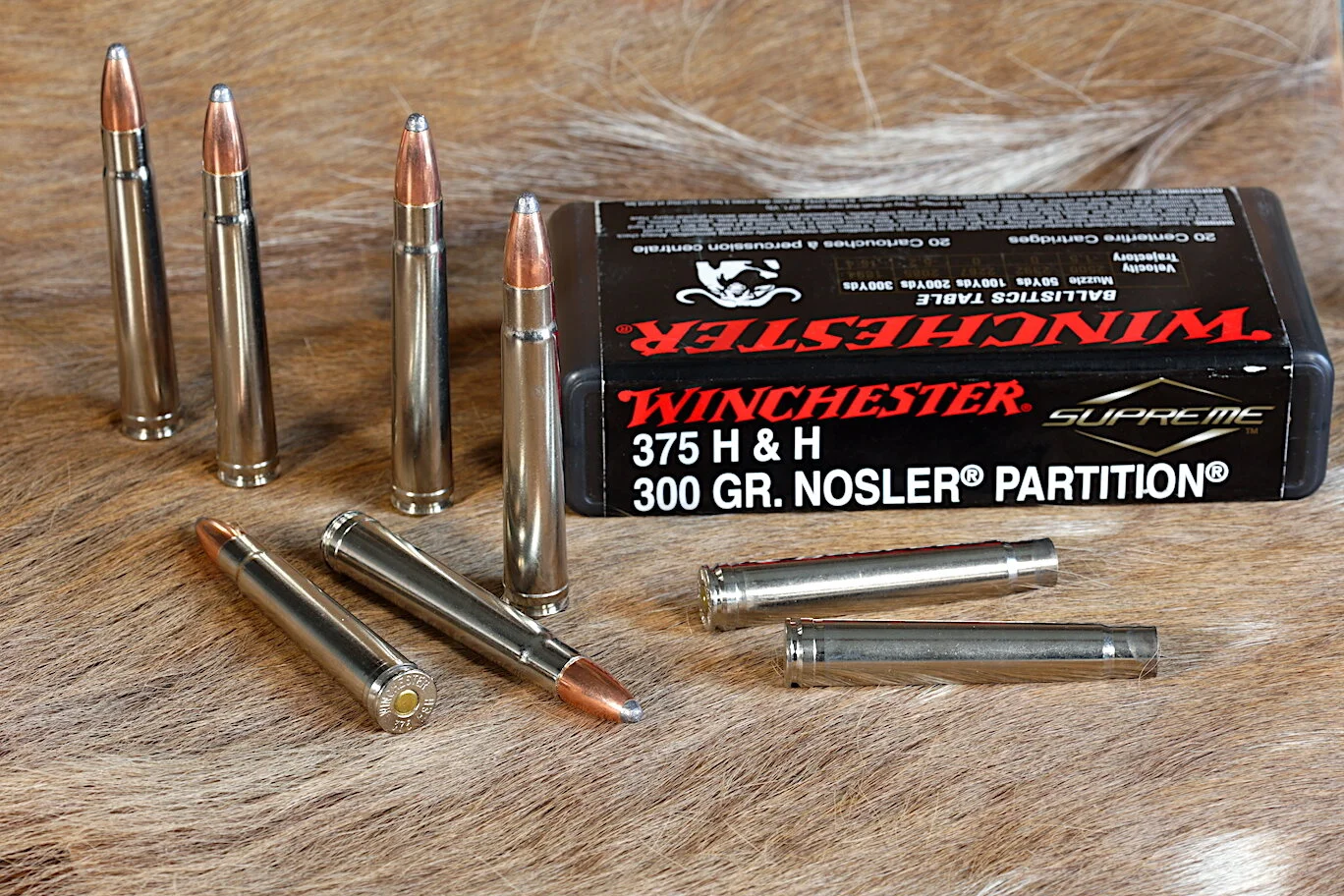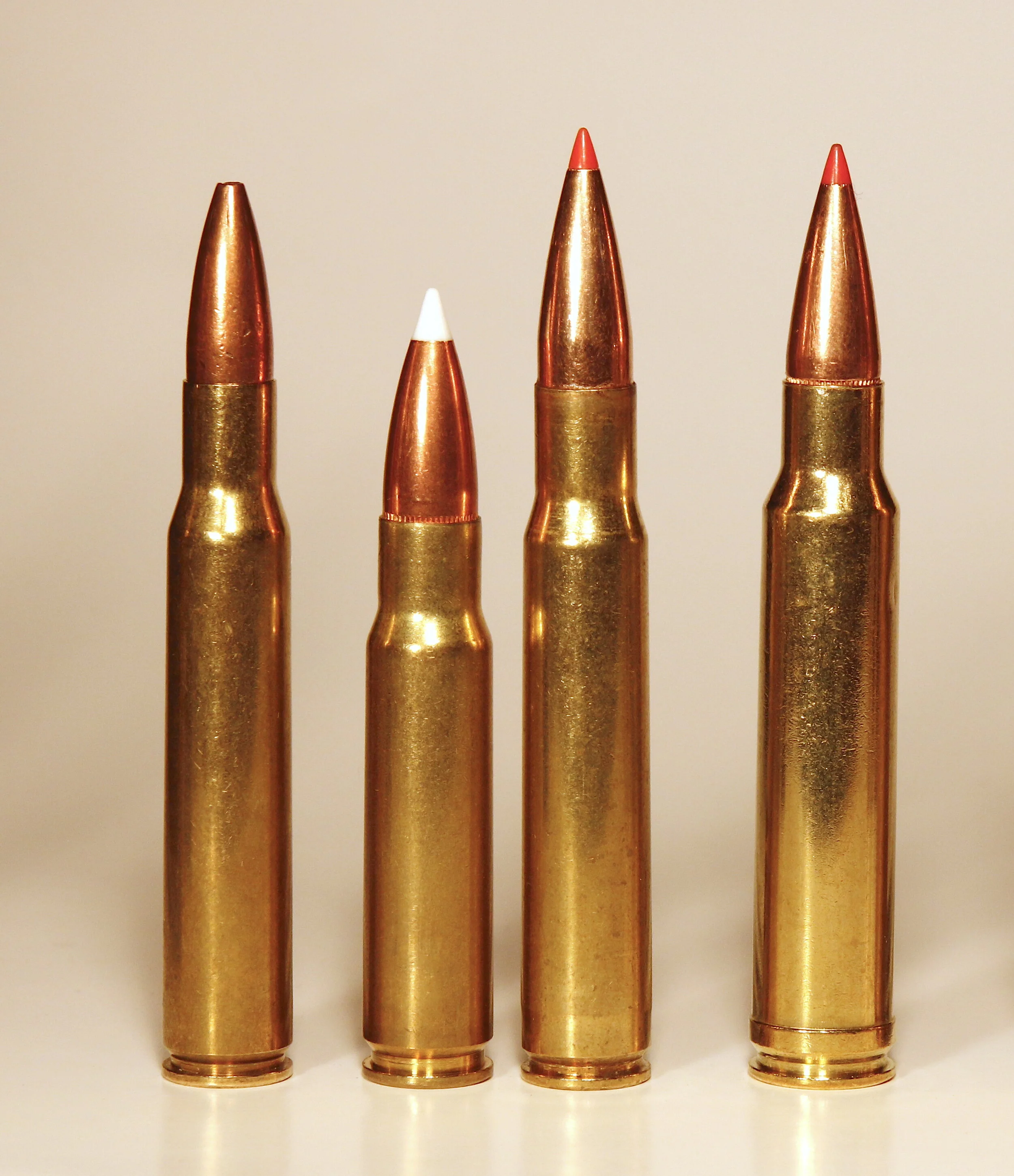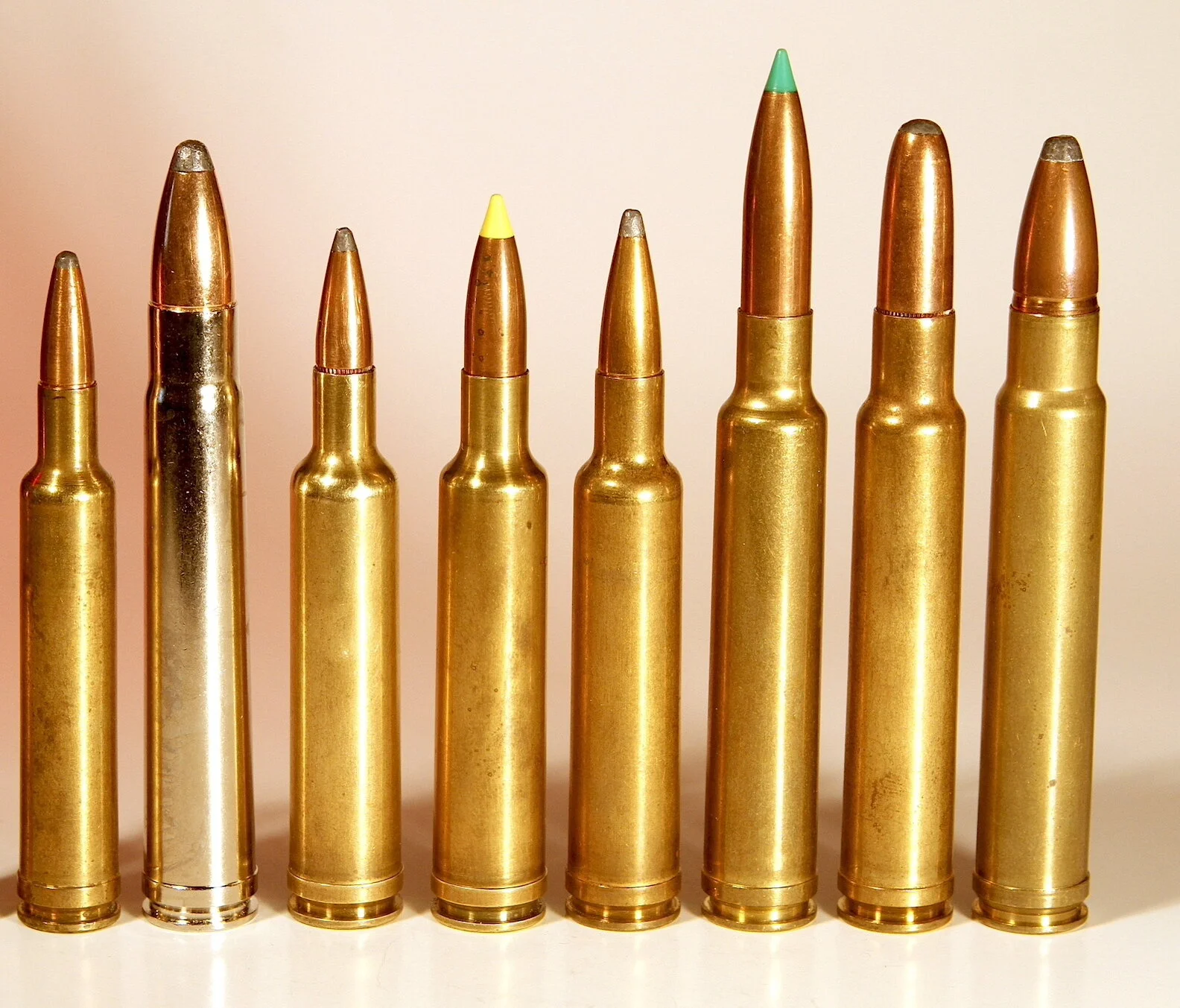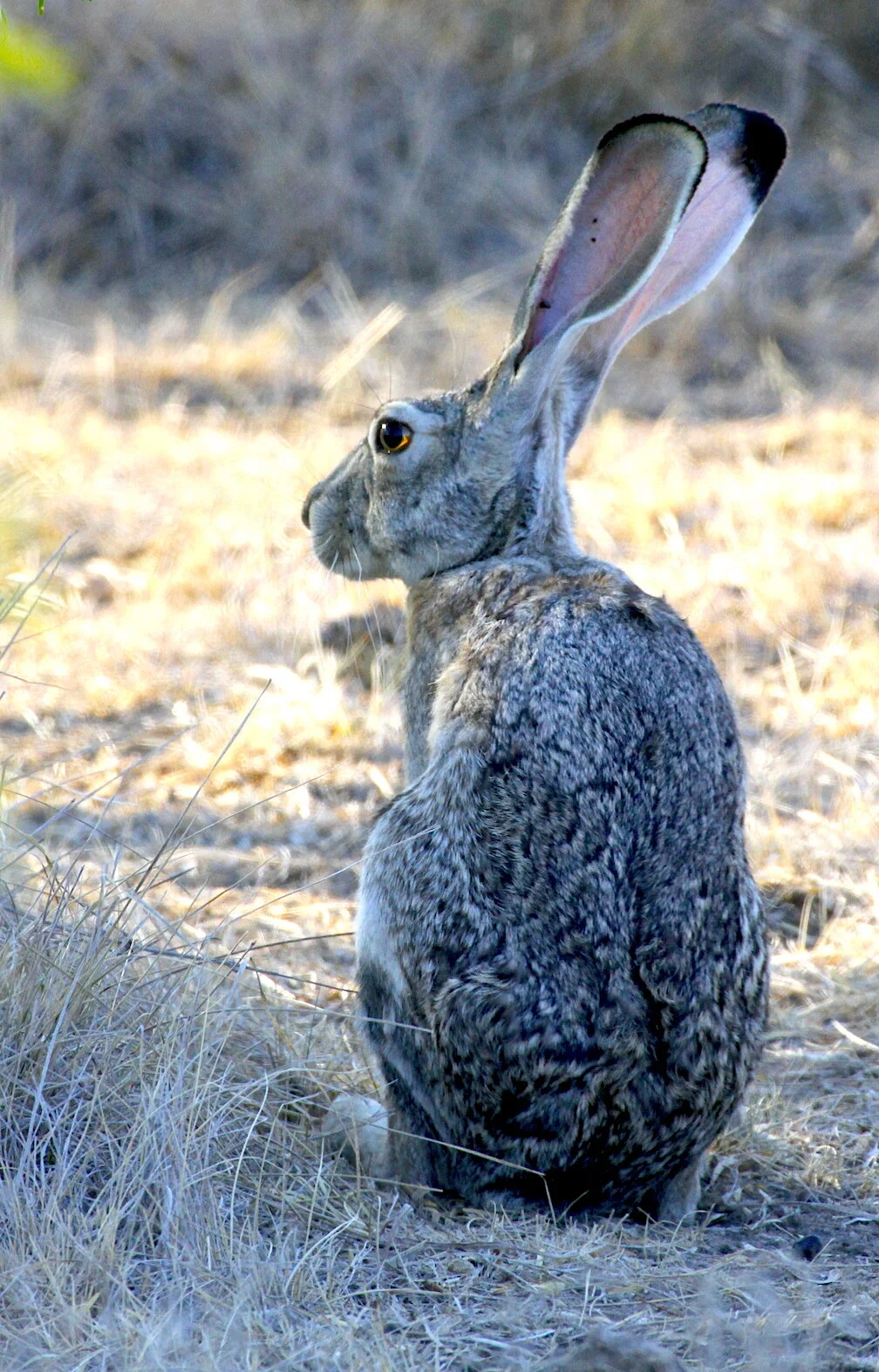Is 375 H&H More Versatile than 30-06?
Wait a minute. Is the 30-06 truly the most versatile cartridge, or is it the 375 H&H?
by Ron Spomer
My recent You Tube video on the versatile 30-06 (plodding, antique Fudd that it is) brought light criticism plus recommendations for the REAL versatile, do-everything cartridge: the almost-as-old-and-Fuddy 375 H&H Magnum of 1912.
Sorry guys, I’m sticking with the older 30-06. But let’s give the 375 H&H its due.
No less an authority than Jack O’Connor labeled the 375 H&H the Queen of Medium Bores. Poacher Jack “Pondoro” Taylor suggested it was the ideal, all-round medium caliber. Based on my conversations with Craig Boddington, not to mention his 10,000 articles or so, he concurs with those icons. And therein lies the problem. The 375 H&H is, indeed, a medium bore. And medium bores have never been a hot category with North American hunters. We are the 30-caliber nation rapidly dropping into the 7mm, 6.5mm, and even 6mm categories.
Her highness the Queen of the middle bores.
These days fewer hunters than ever are lusting for a medium bore. We grab speedy 17- to 22-calibers for varmints, 24- to 30-calibers for deer-sized game and black bears, 7mms to magnum 300s for nearly everything else. And for the lucky hunter venturing after Cape buffalo, Asiatic water buffalo, bongo, bison, and brown bears, the romantic ideal seems to swirl round 416 Magnums and larger. Big bores. 500 Nitro Express. Dangerous game cartridges with a capital boom. Hey, if you wanna do Bwana to the hilt…
BUY NOW
One can certainly argue that the 35 Whelen, 338-06, 338 Win. Mag. and similar medium bores are better medicine than any 30-caliber for elk, moose, kudu, oryx, sable, eland, and grizzlies, but modern, controlled-expansion bullets are proving themselves so effective in 30-calibers — and narrower calibers — that the trend continues away from medium bores.
After our 30-calibers, like 30-06 on left, we Americans tend to skip the medium bores such as the 338 Federal, 338-06, and 338 Win. Mag. and jump right to the big bores.
This says nothing about the performance potential of the medium bores, but I’m afraid they fall in the gap. And sales prove this. Despite its terminal performance advantages, the 35 Whelen is but a scratch on the brass of the 30-06. The 358 Winchester is a forgotten footnote in the life and times of the 308 Winchester. The 338 Federal is still trying to make a blip on the radar.
That belted 375 H&H, however, is just large enough that it squeaks out of the medium bores’ deadly shadow. These days most hunters throw it into the big bore category, and that makes it more appealing. It can easily do what the strongest 30s, 33s, and 35s can do plus accomplish what the 416s and 458s do — given the right modern, controlled expansion bullets. And the old H&H has more than enough “big bore” cachet to please romantics. When I hired a 458 Lott to calm my zambezedeltasafaris.com Cape buffalo, my wife tamed hers just as handily with the 375 H&H barrel on her Blaser R8. Barnes TSX bullets in both cases, hers a 300-grain, mine a 400-grain. The 458 Lott looks and sounds a lot more macho than three-seventy-five, but our bulls didn’t seem to notice the difference. But that’s anecdotal, so forget it. We have more substantial data to consider.
One 300-gr. Barnes TSX from her 375 H&H Blaser R8 and Betsy anchored her Mozambique buffalo. It was a muddy adventure with zambezedeltasafaris.com.
If the 400-gr. Barnes from my R8 in 458 Lott made a bigger impression than Betsy’s 375 H&H, neither of our bulls mentioned it. PH Mike Currie was pleased with both outcomes. Zeiss optics lead the way and performed beautifully.
After 109 years of steady work, the 375 H&H has deep history on its side, having been hired to terminate everything (like the 30-06 has done.) And, also like the 30-06, it has fostered a lot of offspring. Probably more than the 30-06 itself. Let’s see if we can list them:
240 Wby. Mag.
257 Wby. Mag.
270 Wby. Mag.
6.5-300 Wby. Mag.
7mm Wby. Mag.
300 Wby. Mag.
340 Wby. Mag.
375 Wby. Mag.
264 Win. Mag.
300 Win. Mag.
338 Win. Mag.
458 Win. Mag.
6.5 Rem. Mag.
7mm Rem. Mag.
350 Rem. Mag.
416 Rem. Mag.
8mm Rem. Mag.
7mm STW
308 Norma Mag.
240 H&H Mag.
244 H&H Mag.
275 H&H Mag.
300 H&H Mag.
400 H&H Mag.
308 Norma Mag.
358 Norma Mag.
7x61 Sharpe & Hart
458 Lott
(I’m sure I’ve missed one or two, so please fill in the gaps.)
Well, there you go! The old 375 H&H would seem to be the King progenitor. Technically a lot of these creations started with the second generation 300 H&H rather than the original, but let’s not nitpick. The 375 set the foundation.
Here are the Weatherby Magnums sprung from the loins of Holland & Holland’s original 375 H&H case of 1912. Contrary to common wisdom, the 375 H&H was not the world’s first belted case. The 400/375 Nitro Express of 1905 was. Left to right: 240 Wby., 375 H&H, 257 Wby., 270 Wby., 7mm Wby., 300 Wby., 340 Wby., 375 Wby.
Fecundity, alas, does not prove virility. Or versatility. On the claim by many that this is the versatility champ, the One Gun to Rule Them All, as we sometimes say, let’s check that out, starting with bullet variety.
200 grain
220 grain
225 grain
235 grain
250 grain
260 grain
270 grain
285 grain
300 grain
350 grain
407 grain (Berger ELR Match target bullet)
That’s a 207-grain span, lightest to heaviest. Compare it to 150-grain coverage in the 30-06 (Hornady makes a 250-grain .308 target bullet.) But, more significantly, apply those to real hunting.
This is the 300-grain Barnes TSX .375 Betsy pulled from the off-side hide of her Cape buffalo. The shot was from about 125 yards.
While it can be argued (and often is) that a 30-06 shooting a 100-grain bullet is a recipe for rabbit mist (because top velocity can reach 3,500 fps!), folks bringing up that point forget the art of handloading. Handloaders are the modern equivalent of muzzleloader hunters of yore who sometimes burned light doses of powder to propel their 45- to 50-caliber balls toward rabbits and such. A 32-caliber squirrel rifle was ideal, but in a pinch a slower moving large ball did the trick. These days radically reduced quantities of fast-burning powder behind a light 30-06 bullet accomplish the same thing, only better. Speer Handloading Manual 15 lists 16 grains of IMR SR4759 pushing its jacketed 100-grain plinker just 1,545 fps. That’s right in the wheelhouse of hyper-velocity 22 rimfire cartridges. Of course, the .308 bullet is about 3 times heavier than the 22 rimfire. Head shots recommended. But this isn’t red mist levels of power. You should be able to eat those bunnies.
The other option is a “cat’s sneeze” load. This uses a few grains of fast burning pistol powder to push a #0 lead buckshot ball from the 30-06 at a low but unspecified muzzle velocity. For the usual litigation reasons I’ll not provide a recipe for this nor endorse it, but it’s been out there for decades. I can vouch for the 100-grain Speer plinker load. I’ve built and used those for head-shooting forest grouse while elk and moose hunting. They also work well for training and plinking. You can learn your rifle’s trigger, balance, safety, etc. at minimal expense, almost no recoil, and little to no wear and tear on your barrel or even brass cases. (Just clearly and dramatically mark those reduced power loads so you don’t inadvertently load one up during an elk hunt!)
We didn’t find a 375 H&H excessive for common reedbuck, roughly the size of a typical whitetail or mule deer. But this rifle/load didn’t flatten this buck with authority, either. After taking the 300-grain bullet through the chest, the ram dashed a good 100 yards before piling up — about like whitetails do when hit by a 30-06, 6mm Rem., or even 22-250 Rem.
For small game and plinking versatility. I find it harder to justify a 200-grain .375 bullet. This knocks a rung off the 375 versatility ladder. Now, I can understand the “big bullet” philosophy of deer hunting to justify anything from the 200-grain to the 250-grain for pronghorn, Coues deer, mule deer, and smaller African antelope. But Sectional Density of a 200-grain .375 is just .203 and B.C. in the neighborhood of .230. That’s roughly the equivalent of the 110-gr. .308, but the additional 90-grains of bullet mass seems excessive for plinking.
The 250- to 260-grain .375s would seem the better deer hunting projectiles (SD .264) for a reasonable trajectory curve out to 300 yards or so. Nosler’s 260-grain AccuBond is B.C. rated at .473 and can be driven 2,750 fps from a 24-inch barrel, according to Nosler Reloading Guide 9. The 30-06 equivalent would be a 165-grain AccuBond with an SD of .248 and B.C. of .475. From a 24-inch barrel it should hit 2,900 fps. Obviously, with those numbers the 30-06 will scribe the flattest trajectory with the least wind deflection. Zero both of these for MPBR on a 6-inch target and the 30-06 shoots about 2 inches flatter at 300 yards, about 7 inches flatter at 500 yards. Wind deflection is quite close at 300 yards, but the 30-06 begins showing a slim advantage at 500 yards. The significant difference is retained energy with the 375 carrying 800 f-p more at 300 yards, 567 f-p more at 500 yards, as the following charts show:
30-06, 165-grain AccuBond, 2,900 fps. Recoil in 9# rifle: 20.5 f-p
375 H&H Magnum, 260-gr. AccuBond, 2,750 fps. Recoil in 9# rifle: 41 f-p
Having been involved in the taking of literally hundreds of game animals from the tiny Damara dik dik to bison, buffaloes, brown bears, and hippos with a wide variety of cartridges/bullets, I can’t with straight face say 2,800 f-p of kinetic energy are appreciably more effective at terminating deer or even elk and moose than are 2000 f-p. But if you believe they are, the 375 H&H is your baby. I’d certainly want that extra horsepower on my side in any charge, though I’m not convinced even that will guarantee better results. I’ve read and heard too many stories about multiple hits from 416-, 458-, and 500- caliber stopping rifles that didn’t stop anything until one of the principals had been bitten, clawed, gored, or stomped. Hard, high SD bullets of lesser caliber and horsepower have been known to reliably stop the biggest and baddest with a proper central nervous system hit, likely the only hit to reliably stop a charge.
To be fair and accurate, a 300-grain from a 375 H&H at 2,550 fps is appreciably more impressive than a 220-grain from a 30-06 at 2,550 fps. Muzzle energy is 3,177 for the 220-grain .308 slug, 4,332 f-p for the 300-grain .375 slug. At 100 yards the 375 carries a 1,000 f-p advantage. Crank bullet mass to 350-grains in the 375 and you’re clearly way, way out of the 30-06’s league. On Pondoro Taylor’s Knockout Value scale, this 30-06 scores a 23.3 KOV. The 300-grain 375 almost doubles it at 40.1. But for further perspective, know that a 500-grain from the 458 Win. Mag. scores a KOV of 69.7. Furthermore, those values do not relate directly to body strikes. They were Taylor’s measure of a bullet’s ability to stun or knock out an elephant if the bullet passed within an inch or two of the brain, but failed to reach it.
Regardless dangerous game handling, how many hunters/shooters looking for a versatile, all-round rifle are spending more time engaging charging buffalo and bears than whacking whitetails and wabbits for dinner? This, to me, is a more valuable reality for defining versatility. Each of us must decide what the bulk of our shooting will require. Lighter loads for plinking, small game hunting, and medium game hunting? Or heavy loads for stopping bison, buffalo, brown bears, and hippos? The ultimate pragmatist might argue that he’ll make sure he’s got the stopping power he needs first because failing to stop a brown bear intent on a hug has more significant repercussions than failing to stop a cottontail intent on reaching a brush pile. Another pragmatist might think it foolish to suffer 50 years of recoil and 375 H&H ammo prices to shoot whitetails, springbucks, duikers, coyotes, and jackrabbits on the decidedly off chance that his one or two forays to Alaska or Mozambique might result in a charge more deadly than his outfitter’s fees.
If, as many contend, the 30-06 is a bit much for small game, what does that make the 375 H&H? Rabbit liquifier? This long-eared fellow is an antelope jackrabbit of the desert SW and isn’t a rabbit at all, but a hare. Hares are born fully furred and precocious. Rabbits are born naked and helpless. But naked and helpless might be how you’d feel in the face of a rampaging buffalo with naught but a 30-06 in your hands. Decisions decisions…
In the final analysis, one could cling to the 30-06 as an ideal versatile cartridge, but give the nod to the 375 H&H for the most versatile when small game is off the table, but dangerous game is the annual center piece. That old claim of the 375 H&H being the ideal one-gun solution for an Africa safari could certainly hold true. Fortunately, most of us U.S. citizens have the right and resources to contemplate a one-gun solution while buying many. That way we have the ideal tool for every job! The second amendment in the Bill of Rights is a beautiful thing. Hunt honest, folks, and shoot straight.








































